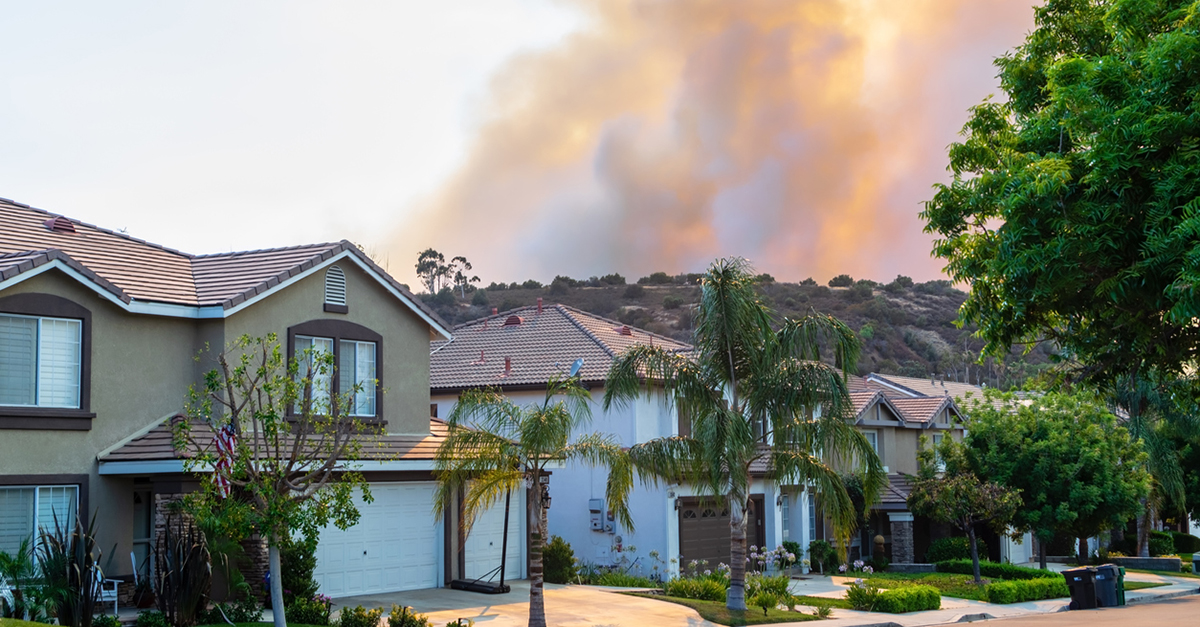Over the past two years, California’s fire-related damages have reached historic highs, bringing on added affordability challenges to those already living in one of the country’s most expensive states.
In 2018 alone, over 6,000 fires in the state burned through 876,147 acres. The Camp Fire proved to be the state’s most destructive wildfire, killing 85 people, destroying over 18,000 structures and demolishing an entire town.
Although 2017 sparked more fires, the damages were less severe, contained to 505,956 acres of scorched land. These latest figures, however, are much higher than the five-year average for California, 5,756 fires and 233,483 acres burned.
What does this say about the future?
“Several years of drought, millions of dead trees and grassland fuel and four consecutive years of devastating wildfires, including the deadliest and most expensive in our state’s history, have taken a toll on the availability and affordability of homeowners insurance in California,” says Byron Tucker, the deputy insurance commissioner for the California Department of Insurance (CDI).
Wildfires are expected to increase as temperatures rise and summer droughts lengthen, according to a report released by the Trump Administration last year. Insurance companies are backing out of existing policies, choosing not to renew, or are hiking up prices in response. Allstate, for example, reduced its policy count for California home insurance by around 50 percent in the last 10 years, according to the Wall Street Journal. Similarly, Travelers Cos. will not be renewing some of its California policies to reduce the level of risk it takes on in its portfolio.
“We expect that, for homeowners in any area that presents a high risk of wildfire loss, there are likely to be fewer options for coverage—insurance will be more expensive and harder to get,” says Tucker. “We have noted an uptick in non-renewals in high-risk areas due to fire risk and we are monitoring the situation closely.”
What are other insurance options?
While the state offers the FAIR Plan, founded in 1968, to insure properties that the private sector will not cover, it is often a last-ditch effort for residents. The plan has strict limitations and is expensive, especially for residents located in brush/wildfire areas who may be charged higher premiums.
Some Californians are finding that wildfire coverage provided by surplus insurers, although also pricey and susceptible to steep increases, may be the only option after finding out their insurance provider will not renew their existing policy. According to WSJ, these companies sold 49,000 homeowner policies with $122 million in combined premiums in 2018, an increase from the 30,500 policies taken out in 2014.
“Surplus lines insurers are required to be licensed to sell coverage in California; however, they are not part of what we call the admitted market, which requires insurers to be subject to the regulations under Proposition 103,” says Tucker. “So, while consumers may find success in securing coverage from a surplus lines carrier, they do not have the same robust Department protections provided under Proposition 103.”
What is Proposition 103?
“California consumers enjoy the protections of Proposition 103, which requires insurers first obtain approval from the Insurance Commissioner before they change their rates,” says Tucker. “Under Proposition 103, insurers are required to prove their rates are justified by presenting data that are verifiable and reliable. The Department’s independent actuaries review insurer rate filings to make sure what they are requesting is justified, and the Commissioner has the authority to reject or adjust rates that are not justified.”
With fire incidents increasing in areas across California, however, many of these rate increase proposals are being approved. According to a 2017 report by the CDI, homeowners have described paying an annual premium of $800-$1,000, which increased to as high as $2,500-$5,000 upon renewal even after conducting wide-ranging mitigation.
Could this impact housing affordability?
According to the Traditional Housing Affordability Index released by the California Association of REALTORS®, the percentage of homeowners able to afford a median-priced, existing single-family home ($564,270) increased in the fourth quarter of 2018 to 28 percent. The California index, however, has come in under 35 percent for the past several years, with the median price of property extremely high compared to the national median of $257,600.
Additionally, the Zillow Home Value Index says California’s home values have increased 4 percent since last year and are predicted to rise 7.3 percent by next year. With the combination of increasing home values and insurance costs, California could experience a continued hit to housing affordability in the coming years, especially in areas that typically experience wildfires.
The state is making moves to focus on fire resistance and reduce property losses through the California Fire Plan, finalized this past summer. These strategies will allegedly limit the destruction of wildfires and introduce new construction that is less susceptible to fire damage. Will residents of fire-prone areas see a drawback from these pricing swells, or will wildfire insurance premiums continue to tick up, ultimately impacting housing affordability?
 Liz Dominguez is RISMedia’s associate content editor. Email her your real estate news ideas at ldominguez@rismedia.com.
Liz Dominguez is RISMedia’s associate content editor. Email her your real estate news ideas at ldominguez@rismedia.com.











